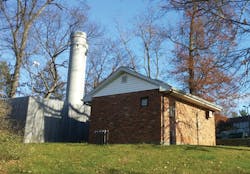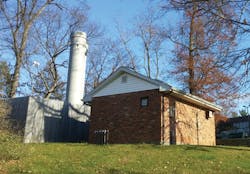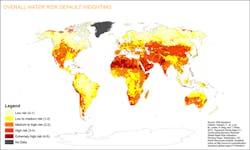By Martha Silks and Frank Getchell
As Benjamin Franklin said in 1746, “When the well is dry, we know the worth of water.” Water is essential to human health, agriculture, industry, energy production, ecosystem integrity, and the economic vitality of our communities and our country. However, until just recently, it is safe to say that many in our country considered water (especially groundwater) to be an unlimited and undervalued resource.
According to the U.S. Environmental Protection Agency (EPA), water use is concentrated in major sections of our economy, including agriculture, forestry, mining, energy resource extraction, manufacturing, electric power production, and public water supply. The output from these sectors creates a ripple effect elsewhere in our economy - and that of the rest of the world - as goods and services are produced and transferred through supply chains until they reach the final consumer. As economic and drinking water supply demands grow, effectively addressing the resulting increased competition for clean and reliable water resources will cause a focus in efforts towards developing and improving efficient and sustainable resource use.
According to the U.S. Geological Survey, approximately 355 billion gallons of fresh water are pumped each day in the United States, of which 19 percent is from groundwater sources. However, water users, including those relying on groundwater sources, face new challenges as impacts from climate variability and change, mining of finite aquifers, reduction in recharge areas due to overdevelopment, and degraded water quality dramatically reduce the amount and location of available fresh water. As such, what were once considered to be abundant supplies of good quality water can no longer be taken for granted. Increasing competition among water uses is leading to critical decisions about how and to whom water is allocated, inherently resulting in winners and losers as weight is given to one use over another. In order to help make these decisions as fair and beneficial as possible, we all need to become good water stewards and fully understand how our use of water resources is critical to everyone’s way of life.
Water stewardship is about understanding the challenges and repercussions we all face from water scarcity and waste, and taking action toward developing a sustainable management of the shared resource. To encourage good water stewardship, here are six concepts that should be considered and incorporated into every major decision we make about water use.
1. Don’t compete for a higher quality source than you need or can reasonably use.
Most water users develop the source that is most convenient without taking a broader view. Water withdrawals are not without consequences or repercussions. With groundwater supplies, bypassing the most utilized, most obvious, and freshest water source and targeting a deeper, more complex, or less desirable quality water source may be the best choice for all in the long term. The long-term benefits and avoidance of potential conflicts may be achieved by stepping out of the box and taking the bigger picture into account.
2. View your water supply needs as a circular system.
Reduce, reuse, and reserve are the three R’s for developing a sustainable water supply system today and in the future. The basic premise here is to take a net positive approach and view all wastes, including process water and in some areas stormwater as possible resources for your and/or someone else’s water supply system. Wastewater technology has advanced to a point where one entity’s waste stream can be reused as another’s resource. The collection and managed infiltration of stormwater can be a local source of recharge and groundwater reserve buildup. Look for these opportunities.
3. Construct, operate, and maintain your water supply system with the same care you would take on other critical infrastructure in your facility.
Let’s face it, most facilities and potable systems can’t operate without a reliable water supply, and such a critical raw product should be given its proper value. Material selection should be made to fit the geographical, geological and geochemical environments in which it will reside. Workmanship should be suitable for a critical component that will last 50+ years. Construction considerations should be made with long-term maintenance and reliability as a priority. Be aware that over the long term more money is spent maintaining and operating a raw water supply source than on its initial construction. Consider it money well spent to construct an efficient system that will minimize energy consumption and downtime for maintenance, and reduce both the carbon and water footprints. Regular or timely maintenance of a supply well can limit the waste of energy while also prolonging the value of the original capital investment in a well.
4. Become a good water steward by developing a responsible use of water.
Water stewardship means using water in a manner that is socially and economically beneficial as well as sustainable. It is achieved by considering and including all stakeholders, and looking for ways to do more with less. Pumping from an aquifer that is characterized by water quality not suitable for potable needs but that is more than adequate for meeting production or cooling demands is one such way that an industry can win, while also enabling the needs of a community or sensitive ecological niche to be satisfied.
5. Always search for ways to improve and reduce waste without affecting system efficiency or your profitability.
Resist the inclination to accept “good enough for now” and learn which associated inefficiencies result in the loss of time, materials, or money. Losses often relate to and result in a waste of water and energy.
6. Take Action.
Follow the adage: Actions speak louder than words. Be aware that knowing what actions are best and implementing those actions are two different things. Change your view on water supply development and its use and you’ll be well on your way to becoming a good water steward.
About the Authors: Martha Silks is an associate and Frank Getchell is a senior vice president, both with Leggette, Brashears & Graham Inc., a leading consulting firm specializing in hydrogeology.
More WaterWorld Current Issue Articles
More WaterWorld Archives Issue Articles





